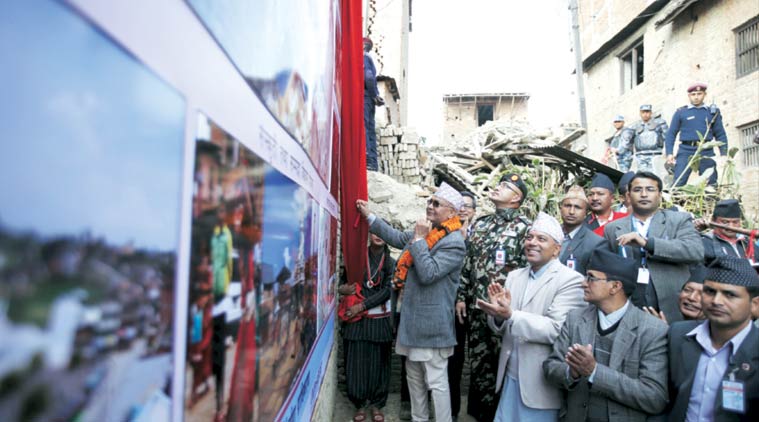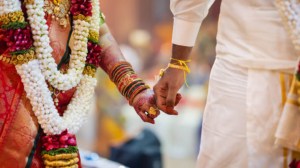A day after the Nepal parliament passed two crucial amendments to their Constitution that address key Madhesi demands of proportional representation and inclusion in state bodies, New Delhi on Sunday said that this was a “positive” development and hoped that other outstanding issues would be similarly addressed in a constructive spirit. Top government sources told The Indian Express that this paved the way for Nepal Prime Minister K P Oli’s visit next month — his first overseas visit since taking charge. “In early January Oli expressed interest in visiting India first, contrary to reports that he would go to China first. Dates will now be worked out,” a source said.

The Indian Express accessed the amendments to the Constitution and compared them with the September 2015 constitution.
* The first amendment is regarding the issue of representation of Terai Madhes in the Lower House, which had been significantly reduced since the criterion of “population” for constituency delimitation had been diluted, as compared to geography. This had put those living in the plains — Madhesis living in Terai region — at a disadvantage to those living in the hills.
Article 84 (1) of the constitution — which was adopted and promulgated in September 2015 — said the House of Representatives shall consist of 275 members as follows: a) 165 members elected through the first-past-the-post electoral system consisting of one member from each of the 165 electoral constituencies, formed by dividing Nepal into 165 constituencies on the basis of geography and population. It led to the apprehension among Madhesis that only 60-65 out of 165 directly elected seats go to the Terai, giving it 35 seats less out of 165, or 21.2 per cent less. This was one of the major reasons behind the protests.
Now, the amended Article 84 (1) says, “165 members elected through the first-past-the-post electoral system consisting of one member from each of the 165 constituencies on the basis of population as the main and geography as the second basis, in accordance with federal law such that within a province each district has at least one constituency.”
Sources pointed out that since it has been categorically said that population is the “main basis”, Terai is expected to get about 79 seats.
* The second amendment pertains to the issue of inclusion for participation in the state structures or bodies.
Article 42 (1) of the constitution promulgated in September 2015 said that socially backward women, Dalits, Adivasis, Janjatis, Khas Aryas, Madhesis, Tharus, minority groups, persons with disability, marginalised groups, Muslims, backward classes, gender and sexually minority groups, youths, peasants, labourers, the oppressed and citizens of backward regions shall have the right to employment in state structures and public service on the basis of the principle of inclusion. The sticking point about this clause was that “inclusion” without mentioning “proportional” had created an atmosphere of mistrust. This was compounded by including Khas Aryas — a hill upper caste community — and generic categories like ‘youth’ and farmers were seen as negating the principle of affirmative action or reservation for needy sections.
Story continues below this ad
The amended Article 42 (1) now says, “Economically, socially or educationally backward women, Dalits, indigenous Janajatis, Madhesi, Tharu, Muslim, backward classes, minority, marginalised groups, persons with disability, gender and sexually minority groups, farmers, labourers, citizens of the oppressed and backward regions, and economically weak Khas Arya shall have the right of representation in state organs on the basis of the principle of proportional inclusion.”
Sources said that while the word “proportional” has been added, the “youth” category — which was seen as vague and prone to arbitrariness and misuse — has been removed. Also, only “economically weak” Khas Aryas will get the benefit now.
What role did India play?
Officials said that these two amendments were brought about after hectic parleys since early December between Indian and Nepalese leaders. While Prime Minister Narendra Modi had a telephone conversation with the Nepal PM on December 31, External Affairs Minister Sushma Swaraj, according to sources, had about “half-a-dozen phone conversations” with Nepal’s political leadership, including her counterpart Kamal Thapa (who is also the deputy PM). She met top leaders from both sides of the aisle in Nepal between January 6 and 8.
Officials said the passing of these two amendments would significantly reduce the trust deficit between the ruling coalition in Kathmandu and the Madhesi leaders. “While some Madhesi MPs shouted slogans and walked out of parliament, they have not rejected the amendments. The Madhesi leaders have criticised the government, saying that the process is still incomplete. That is what the Indian government is also saying, since other issues pertaining to constituency delimitation and citizenship need to be addressed in three months,” an official said.
Story continues below this ad
Ministry of External Affairs spokesperson Vikas Swarup said on Sunday, “We regard the two amendments passed yesterday by the Nepali parliament as positive developments. We hope that other outstanding issues are similarly addressed in a constructive spirit.”

 The amendments to the Nepal constitution have paved the way for PM K P Oli’s visit next month — his first foreign visit since taking charge — sources said. (Reuters/File)
The amendments to the Nepal constitution have paved the way for PM K P Oli’s visit next month — his first foreign visit since taking charge — sources said. (Reuters/File)





































